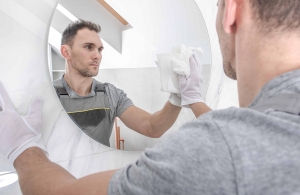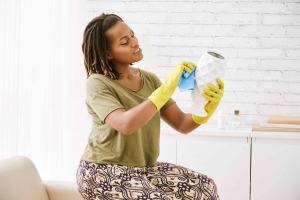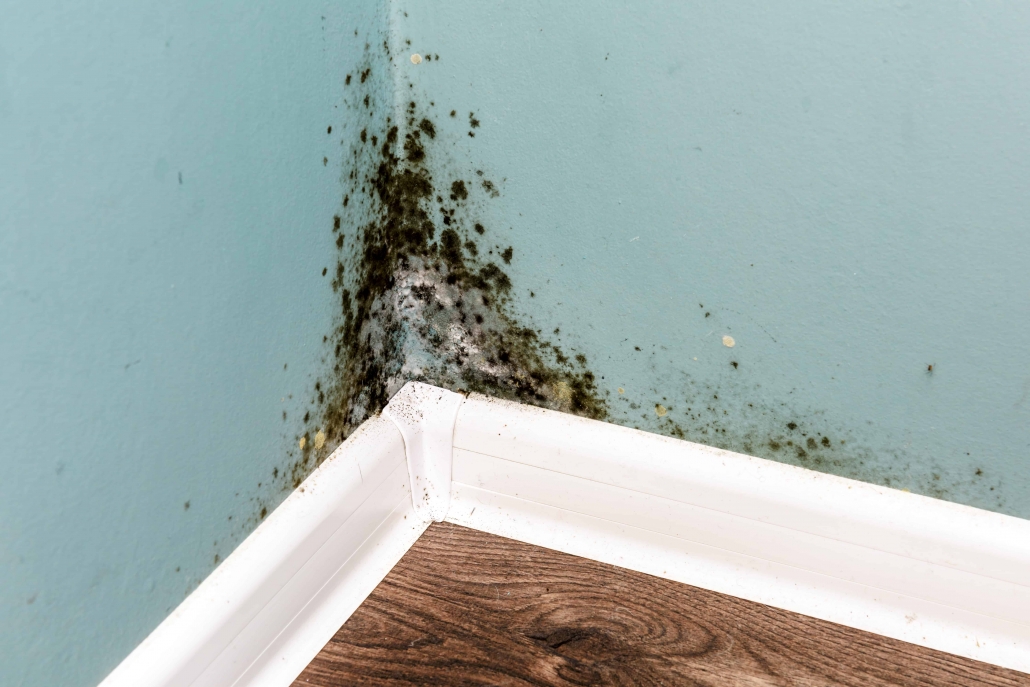10 Mould-Fighting Tips to Make Your Home Safe from Mould
We all know mould as that pesky little gremlin that often appears wherever there is a frequently high amount of moisture and humidity in the air. Mould, and its younger cousin, mildew – mould in its early stage – can severely impact your health. Mould removal is a stage none of us really want to get to –you know what they say, “prevention is better than cure”, right?
What is mould?
 Mould is a type of fungi comprising of naturally occurring organisms that play a major part in the ecosystem. Mould thrives in damp and poorly ventilated areas and reproduces by making spores. Present basically everywhere, mould can grow in and on matter such as food, fabric, carpets, walls, paper, timber, and plumbing.
Mould is a type of fungi comprising of naturally occurring organisms that play a major part in the ecosystem. Mould thrives in damp and poorly ventilated areas and reproduces by making spores. Present basically everywhere, mould can grow in and on matter such as food, fabric, carpets, walls, paper, timber, and plumbing.
1 in 4 homes contain mould. According to a review of nine studies published in the Medical Journal of Australia in 2018, an estimated 26% of Australian homes have mould in areas other than the bathroom. While mould can often be visible on surface areas, it can sometimes be hidden within walls. While mould could be detrimental if found in your home, however, it does serve important purposes elsewhere, such as the breaking down of organic matter in nature (not to mention it is essential in the making of brie and penicillin!)
Water leaks often precede mould on a property. Water damage is often found at the source of visual signs of mould growth. Mould removal is something to seriously consider if you are experiencing mould in your home.
What’s so bad about mould?
Mould spores spread like wildfire and are impossible to completely get rid of. The inhalation of these spores can inflame the airways, causing nasal congestion, wheezing, chest tightness, coughing and throat irritation. Ongoing exposure to mould can decrease lung function and cause chronic health problems, such as asthma. According to the World Health Organisation, a substantial amount of the world’s 300 million cases of asthma in children is a result of mould exposure.
Recent studies have shown that mould can even be related to depression.
Symptoms of a possibly mould allergy include:
- A running or blocked nose
- Irritated eyes
- Dry skin
- Sneezing
- Wheezing or a cough
The 10 Mould-Fighting Tips to Make Your Home Safe from Mould
1. Open any doors and windows to allow air circulation, especially in the bathroom.

2. Utilise your range/exhaust hood in your kitchen.

If you have a ducted or ductless range/exhaust hood in your kitchen, it is recommended to use it every time you’re cooking on the stove. If you don’t have one, exhaust hoods is an investment that could positivity impact your health and also aid in the fight against mould in your home.
3. Dry wet areas immediately

Without moisture, mould can’t grow, so it’s best to treat wet areas as soon as possible. If you’ve experienced a flood, remove all furniture, bedding and carpets if they can’t be completely dried.
4. Wipe away moisture from windows, walls and near taps. Keep bathroom walls, showers, shower curtains, bathtubs, and basins as dry as possible.

Installing an exhaust fan is an excellent option for mould prevention in the bathroom, as it will help circulate the air cand remove moisture quickly and effectively.
5. Avoid air drying clothes indoors – outside is always best!

It is best to dry your clothes outside, but if you need to dry them indoor, do so in a well-ventilated area inside. Make sure they are dry before putting them away and leave your wardrobe doors open where possible.
6. Be mindful of severe differences in heat between indoors and outdoors, as condensation will form if there’s a gap in the window or you open the door.
7. Mould uses organic matter – such as dust or dead skin cells – to thrive, so it’s important to vacuum and dust regularly.

8. Clean carpets and rugs regularly using a HEPA (high efficiency particulate air) filter vacuum cleaner.

Vacuums with HEPA (High-Efficiency Particulate Air) filters trap the dirt you can’t see, as well
as trapping droppings from dust mites, pollen, mould, pet dander, and tobacco particles. View a list of available HEPA vacuums available here.
9. Clean or repair roof gutters.

Sometimes, mould issues could be a simple matter of a leaky roof due to damaged or full gutters. Ensure your gutters are cleaned regularly and repair when necessary.
10. If you have areas in your home that are dark, warm, damp and lacking proper ventilation, or areas in your home or business that could be prone to mould, contact our Brisbane team. If mould is present in your home and you want long lasting, effective removal, call us today!
See our Mould Removal Brisbane process in action.





